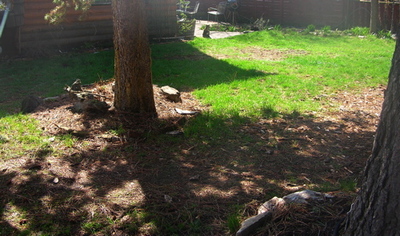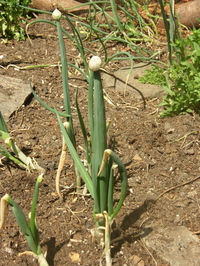Having spent most of the past six months researching and writing about this topic (and yesterday writing about one aspect of it), I’m gearing up to put all my new theoretical knowledge into practice. One thing is sure: if it works on my lawn, it’ll work anywhere.
Indeed, if you saw my lawn, you’d probably look elsewhere for advice on caring for yours.  In my defense, let me say that neither lawn nor garden (nor house, for that matter) had received any care from the previous owner, one of Bozeman’s many avid outdoor folk who used the house to sleep in, but who for all intents and purposes lived outside–not in his back yard, but in the mountains nearby.
In my defense, let me say that neither lawn nor garden (nor house, for that matter) had received any care from the previous owner, one of Bozeman’s many avid outdoor folk who used the house to sleep in, but who for all intents and purposes lived outside–not in his back yard, but in the mountains nearby.
So for the twenty odd years of his tenure, the grass that was here got mown, but that was about it. And truth to tell, it hasn’t gotten much more from us in the seven years we’ve lived here. I did undertake one major task, digging the creeping bell-flower roots out of one section of lawn, but that is definitely a post unto itself.
This spring, I’ve been weeding sporadically, trying to get things cleaned up enough to start the sequence laid out so neatly in the article I’ve been working on: weed, aerate, amend, overseed. (If my amendments are good enough, I may not fertilize till fall.) I’ve never aerated, and I’m dying to see what transformative effects it will have. I’ve gotten a seed mix from a local greenhouse, their low-water use mixture of native fescues, which should do well in our largely shady yard. This is the year—this is when it will happen—this is it, I’m sure.
If it ever stops raining.


 Subscribe to RSS feed
Subscribe to RSS feed


